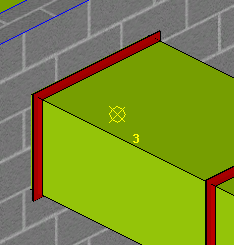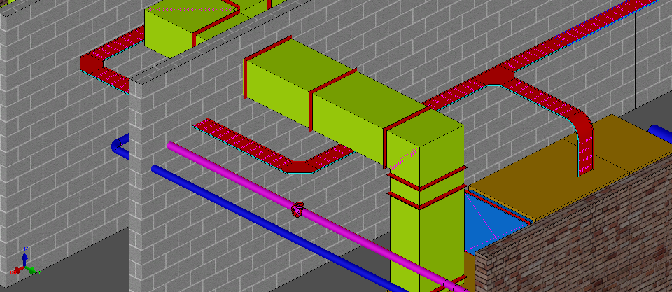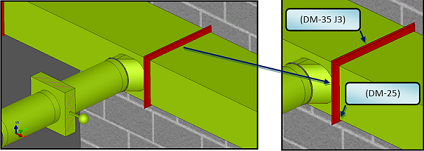Below are descriptions and examples of the following situations that can be detected using the JOBCOLLISIONS command:
- Collisions - Detects spatial collisions between individual services or between services and structures.
- Full or Partial Duplication\Overlap - Detects items that are placed on top of one another or are inappropriately overlapping other parts.
- Open End - Detects items that are not connected to another item (gaps).
- Connectivity Mismatch - Detects when an item is connected to another item type that is not typical; for example, a straight round duct connecting to a straight rectangular duct.
- Size Connectivity Mismatch - Detects when an item connects to another item size that is not typical; for example, 800x300 straight rectangular duct connecting to a 800x500 straight rectangular duct.
An example of each condition is shown below.
Collisions
Spatial collisions between individual services or between services and structures can be detected. The services and structures can be imported as separate E-Links.

Full Duplication
A full duplication of overlapping items is when an item is copied over the top of another item, and all of the node locations overlap.

Partial Duplication
A partial duplication of overlapping items is determined when an item is copied over the top of another item, however only some of the nodes involved overlap.

Connectivity Mismatch
A connectivity mismatch in a service model is when items connect to items of a different type.

Size Connectivity Mismatch
A size connectivity mismatch in a service model is when the actual items are not typical in size when connecting from one item to another.

Open End
An open end can be detected in any location within a services model where an item end node is not connected to another item's end node.

